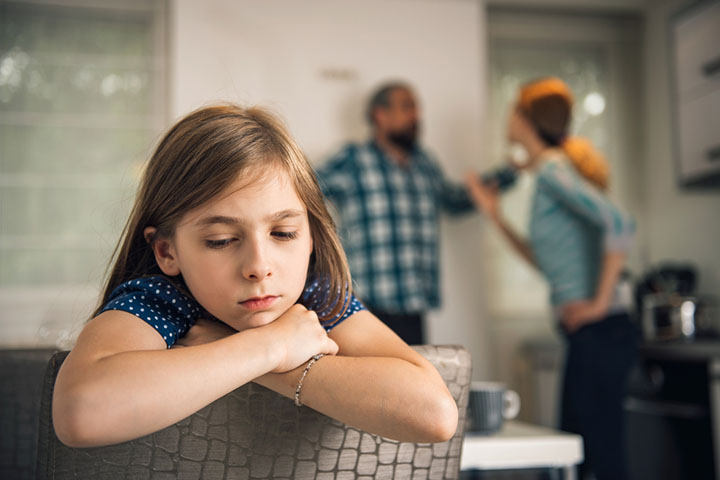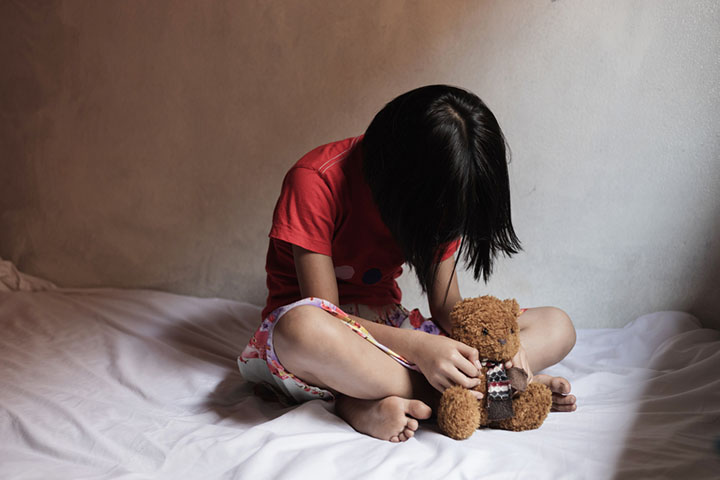
Image: Shutterstock
As a parent, it is natural that you will want the best for your children. But if your kids are suffering from emotional trauma, you might get confused regarding how to help them. Emotional trauma can be caused by various factors, from loss and abuse to bullying and accidents. In this article, we’ll explore what causes emotional trauma, its impact on children, and practical ways to support them in their healing journey. Read on to know more!
What Causes Emotional Trauma?
Image: Shutterstock
1. Childhood Adversities
Childhood adversities, such as physical or emotional abuse, neglect, or witnessing domestic violence, can be significant sources of emotional trauma. Traumatic experiences during childhood can have lasting effects on a child’s mental and emotional well-being.
2. Loss And Grief
The loss of a loved one, a pet, or even a cherished possession can lead to emotional trauma in children. It’s important to acknowledge their grief and provide a safe space for them to express their feelings.
3. Divorce Or Separation
Family changes like divorce or separation can be incredibly distressing for children. The breakdown of their parents’ relationship can trigger feelings of loss, insecurity, and emotional trauma. It’s essential to provide ongoing support and reassurance during these transitions.
4. Community Violence
Exposure to community violence, such as witnessing crime, can have a profound impact on a child’s mental health. The constant fear and stress they experience can lead to emotional trauma, affecting their overall well-being.
5. Accidents And Medical Procedures
Serious accidents or medical procedures can also trigger emotional trauma. Children may be haunted by memories of pain, fear, or helplessness, which can lead to long-term emotional distress.
6. Bullying And Cyberbullying
Bullying, whether in person or online, can deeply affect a child’s emotional well-being. The humiliation and isolation they experience can result in emotional trauma.
Recognizing The Signs
Image: Shutterstock
1. Behavioral Changes
Be attentive to any significant changes in your child’s behavior. Emotional trauma can manifest as withdrawal, irritability, aggression, or regression in their developmental milestones.
2. Physical Symptoms
Trauma can manifest physically through symptoms like headaches, stomachaches, and sleep disturbances. It’s crucial to consult a healthcare professional to rule out any medical causes.
3. Emotional Reactions
Children may experience a range of emotions, from fear and sadness to anger and guilt. They may also have trouble concentrating, be hypervigilant, or experience nightmares.
4. Regression In Behavior
Sometimes, children dealing with emotional trauma may revert to behaviors typical of younger ages, like bed-wetting, thumb-sucking, or clinging to a security blanket. Recognizing these behaviors is essential to offer appropriate support.
5. Academic Struggles
Trauma can affect a child’s ability to concentrate and learn, leading to academic struggles. They might have difficulty focusing on schoolwork or participating in class activities.
6. Avoidance And Isolation
Some children cope with trauma by avoiding reminders of the event or isolating themselves from friends and family. Encouraging them to gradually re-engage with social activities is crucial.
Supporting Your Child
Image: Shutterstock
1. Create A Safe Environment
Establish an environment where your child feels safe expressing their feelings without judgment. Ensure that they know they can come to you with any concerns or emotions they may have.
2. Open Communication
Encourage open and honest communication. Let your child know that you’re there to listen and offer support, and be patient if they’re not ready to talk right away.
3. Mindfulness And Relaxation Techniques
Teach your child mindfulness and relaxation techniques, such as deep breathing exercises or yoga, to help manage their stress and anxiety. These techniques can empower them to regain control over their emotions.
4. Encourage Healthy Outlets
Promote activities that allow your child to express their emotions in a healthy way. Art, music, sports, or writing can serve as creative outlets for processing their trauma.
5. Respect Their Boundaries
Respect your child’s boundaries. If they’re not ready to discuss their trauma or emotions, give them space while reassuring them of your unwavering support.
6. Routine And Stability
Maintain a stable routine. Predictable daily routines can provide a sense of security, which is essential for children dealing with emotional trauma.
7. Seek Professional Help
If you notice that your child’s trauma symptoms persist or worsen, consider consulting a mental health professional specializing in children and trauma. Therapy and counseling can provide essential support.
8. Self-Care For Parents
Dealing with your child’s emotional trauma can be emotionally draining for you as a parent. It’s crucial to prioritize self-care and seek support for yourself, whether through therapy, support groups, or confiding in friends and family.
9. Art And Play Therapy
Art and play therapy can be effective ways for children to express their feelings when they can’t put them into words. Engaging in creative activities can help them process their trauma.
10. Educate Yourself
Educate yourself about childhood trauma and its effects. Understanding the subject better will help you support your child more effectively.
Helping children deal with emotional trauma requires patience, understanding, and a commitment to their well-being. By recognizing the signs, providing a safe and stable environment, and seeking professional help when needed, you can make a significant difference in your child’s healing process. Remember, you’re not alone in this journey. With the right support, children can overcome emotional trauma and grow into emotionally resilient individuals.















